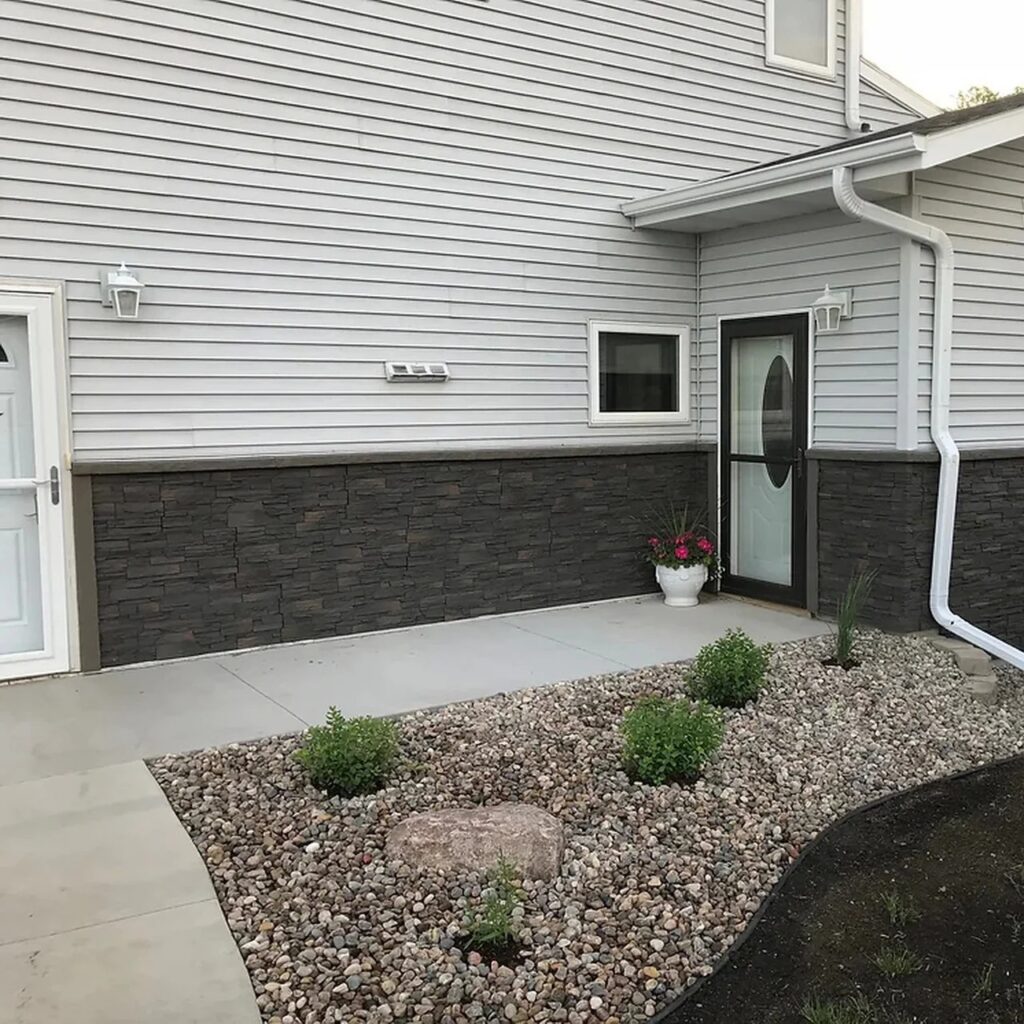There’s something about stone siding that just feels permanent. It adds weight to a home’s exterior—visually, at least—and gives off that solid, grounded look that a lot of homeowners love. But let’s not pretend it’s always practical. Real stone is heavy, expensive, and often a challenge to install. That’s why faux rock siding is quietly becoming a favorite for homeowners who want the look without the stress.
It’s not about faking anything. It’s about working smarter. Faux rock siding is designed to give you the visual and tactile appeal of stone, but with way less weight, way less work, and, frankly, way less budget stress. It’s made from lightweight materials like polyurethane or composite blends, but it’s molded from actual stone, which gives it a realistic texture and feel that’s surprisingly convincing.

What Makes Faux Rock Siding Worth Considering?
There are a few reasons this kind of siding is starting to show up on more homes—especially in areas where weather and maintenance are big concerns. First off, it’s durable. Unlike traditional stone or masonry, faux rock siding doesn’t absorb water, crack in cold weather, or require sealing and upkeep. It handles temperature swings like a champ, making it a great fit for both hot summers and freezing winters.
Second, it’s lighter and easier to install. That might not seem like a big deal until you’ve seen what it takes to put up real stone veneer. With faux siding panels, most installations don’t require any special tools, foundation reinforcement, or masonry work. You can attach them with screws and adhesive—sometimes even over existing surfaces. If you’re handy, it’s totally doable as a DIY project.
Looks Real—Because It’s Molded from the Real Thing
This is the part that usually gets people. Faux rock siding isn’t just some painted panel trying to trick the eye. The surface is molded from real rock to capture all the natural grooves, cracks, and imperfections that make stone, well… stone. Once installed, it has shadows, depth, and variation—so you’re not staring at a flat, one-note wall.
And the color options? There’s a wide range. From earthy browns and tans to cooler greys and charcoal tones, you can match your home’s style without having to repaint or redesign your entire exterior.
Where It Works Best
You can use faux rock siding just about anywhere you’d use traditional stone—but with fewer limitations. A few popular uses:
- Front entryways that need a little more presence
- Bottom half of home exteriors, for a contrast in texture
- Chimneys and porch columns
- Accent walls on garages or additions
- Sheds, cottages, and outbuildings that you want to blend with your main home
It’s also a great solution for homeowners who love the look of stone but live in homes that couldn’t structurally handle the weight of the real stuff. With faux siding, weight isn’t an issue—so you’re free to add that stone look wherever it makes sense.
Low Maintenance, Long-Term Payoff
Real stone has its pros, but it also comes with a list of things to worry about—cracking, staining, weathering, and ongoing care. Faux rock siding? Not so much. Once it’s installed, you’re basically set. It doesn’t need sealing. It’s UV-resistant, so it doesn’t fade like cheaper plastic alternatives. And it’s easy to clean—usually just a rinse with a hose does the job.
That means the look you fall in love with on day one is likely the look you’ll still have years down the line. It’s not one of those upgrades that demands your attention every season.
The Cost-Value Balance
Of course, the big question is always: what’s it going to cost me? While pricing can vary depending on the brand and the specific product line, faux rock siding tends to be significantly more affordable than real stone veneer—both in terms of materials and labor. You’ll save on the product itself, sure, but also on the installation costs, which can really add up with heavier materials.
And because it’s durable and low-maintenance, you’re also saving in the long run. No repairs, no expensive touch-ups, and no hidden upkeep. It’s one of those rare upgrades that looks high-end but behaves like something built for everyday life.

Comments